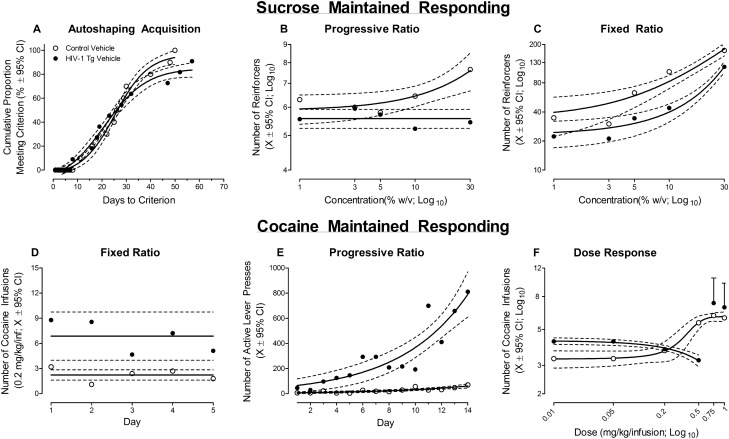Figure 2.
The impact of the HIV-1 transgene on sucrose-maintained responding (A–C) and cocaine-maintained responding (D–F) is illustrated as a function of genotype (HIV-1 Tg Vehicle vs. Control Vehicle; ± 95% Confidence Intervals). HIV-1 Tg animals took significantly longer to successfully acquire autoshaping, supporting a profound deficit in stimulus-reinforcement learning (A). Under sucrose-maintained responding, apathetic behaviors in the HIV-1 Tg rat were characterized by a diminished sensitivity to (B), and reinforcing efficacy of (C), sucrose relative to control animals. Under cocaine-maintained responding, HIV-1 Tg animals exhibited an increased response vigor, independent of schedule of reinforcement (i.e., Fixed Ratio 1: D; Progressive Ratio: E and F), relative to control animals. Furthermore, an increased sensitivity to cocaine dose was observed in HIV-1 Tg animals relative to controls (F). Collectively, independent of differences in the unique response to either sucrose or cocaine self-administration, the HIV-1 Tg rat exhibits prominent alterations in goal-directed behaviors.

